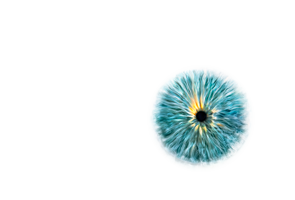W&M Junior Spurs Students Toward Political Activism
WILLIAMSBURG — He led a protest of Henry Kissinger as the new chancellor at the College of William and Mary.
He campaigned for living wages for hourly employees.
He dressed as a logger and carried a cardboard chain saw to protest Staples in Williamsburg.
And he took a group of William and Mary students to Wake Forest University in North Carolina last year to demonstrate against the format of the presidential debates.
All in the past school year.
Peter Maybarduk might not be your typical student — especially at William and Mary, a campus known more for academics than for student antics. But Maybarduk’s definitely made a name for himself on campus, where several of the campaigns that he’s been involved with in recent months have drawn news-media attention.
“If you see a problem and you don’t do anything about it, it really does eat away at you,” Maybarduk said. “I think a lot of students are embarrassed to have feelings so strong about something they feel they have to act on it. That’s really something that has to be overcome.”
This week at his residence hall in the Randolph Complex, the junior anthropology student with floppy blond hair spoke about why he’s a student activist and what motivates him.
Maybarduk doesn’t look like your stereotypical student activist. He’s been known to wear a suit to demonstrations, and he can work a crowd like a polished politician, introducing himself to people or thanking others for responding to his call.
This day, he’s wearing suit pants and an untucked blue dress shirt with an “Organize” button on the pocket. He’s quick to point out that he’s not the only one on campus leading campaigns.
“Sometimes, you’ve got to organize and lead, and other times, you just listen,” Maybarduk said. “Students get involved because they start to learn more about the way the world works and they get upset about it.”
Maybarduk said he’s been interested in political activism since high school. He lived part of his youth in northern Virginia, but he considers Williamsburg his home. His dad is a diplomat and economist with the U.S. Foreign Service, and Maybarduk spent much of his childhood traveling the globe. He’s lived in places such as Cuba, Mexico and Nicaragua. He spent last summer and this winter in Venezuela.
He came to William and Mary three years ago without any set plan to organize students. He joined the Student Environmental Action Coalition as a freshman and became president of SEAC by the end of his first year on campus.
“There was very little left of the organization,” Maybarduk said. “It was just myself and the former president, and the president was graduating. I decided if I was going to do this, I was going to do it right.”
Maybarduk said that a handful of other students helped him renew interest in the club and that the organization took off. Other groups have branched out, such as Free The Planet and the Tidewater Action Group.
SEAC now has at least 180 members and 25 to 30 people who attend weekly meetings, he said. They did away with the position of president and really let the organization run itself, Maybarduk said.
“I think what SEAC really did was help create a critical mass on campus that other people worked to draw on,” Maybarduk said. “That’s the great thing. If you do it right, movements just grow.”
The movements continue to grow.
Members of the Tidewater Labor Support Committee — a student organization started last spring that’s been campaigning for higher wages for hourly and classified workers — continues daily protests on campus.
The “Living Wage” campaign persuaded William and Mary President Timothy J. Sullivan to form a committee this year to look at the problem.
Free The Planet has conducted demonstrations outside Staples on Richmond Road and Monticello Avenue to protest what they call the retailer’s practice of selling paper made from old-growth trees.
“When I got to William and Mary as a freshman, there was really no campus activism to speak of,” said Kristin Schubert, a senior who considers herself a close friend of Maybarduk. “I definitely think Peter deserves the lion’s share of the credit to inspire people.”
Chris Mercer, a senior who met Maybarduk three years ago, said the 21-year-old had always been motivated and enthusiastic about creating change in the campus community. Maybarduk spends countless hours researching issues and communicating with activists across the globe, Mercer said.
“His organizational skills and international experience add substance and continuity to his progressive ideology,” Mercer said. “He’s very passionate, yet cool-headed.”
Maybarduk says that he respects the administration at William and Mary and that he’s worked with top officials on ideas such as starting an environmental living house on campus. He said that he wasn’t so sure what they thought about some of the issues he became involved in but that he had learned to be effective in a political environment.
“Peter has a keen interest in a number of areas,” said Sam Sadler, vice president of student affairs. “He has become quite an activist. He is clearly a person comfortable with digging out his own path and following it.”
Not all the campaigns that Maybarduk gets involved in are locally motivated.
He was voluntarily arrested last year for civil disobedience during a protest in Washington, D.C., of the International Monetary Fund and World Bank.
He was hit with tear gas by police during what he said was a peaceful demonstration outside the World Trade Organization conference in Seattle last year.
He went with Campus Greens, a student organization that supported presidential candidate Ralph Nader, to Wake Forest University in North Carolina last fall to participate in demonstrations outside the presidential debates.
But his most renowned campaign to date is probably the protests that he organized during Kissinger’s installation as chancellor.
Maybarduk actually was more of a decoy during the event, where about 40 students waving signs interrupted the ceremony with chants.
Protesters objected to Kissinger because of his involvement in the Vietnam War and his other foreign-affairs positions.
Maybarduk knew that he was a sort of a marked man, so he sat alone dressed in a suit for most of the ceremony.
While administrators and campus police kept on eye on him, student protesters erupted on the other side of William and Mary Hall.
You can’t win every campaign, he said, but he vows to continue teach-ins each time that the former U.S. secretary of state visits the campus.
“We haven’t had the chancellor appointment changed, but so much came out of the process,” he said.
Maybarduk took some of the momentum from the Kissinger protests and made a run at Student Assembly president.
He finished second but doesn’t dwell on the defeat.
“I definitely see some kind of political future,” Maybarduk said.
No matter what the future holds, Maybarduk’s friends on campus say, they see a leader who’s genuine — one who doesn’t always think that his way is the right way but wants people to act on things that they believe in.
“There are a lot of people like Peter on campus, but he does a really good job of getting them communicating,” Schubert said.
“The things he cares about are things people believe in.”
March 24, 2001|By BRIAN WHITSON Daily Press

